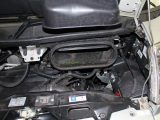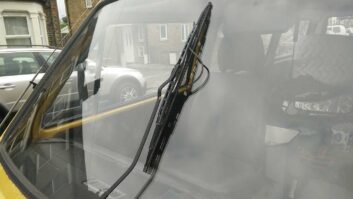Charges for services and repairs are a common discussion point on motorhome forums.
I often see folk complaining about what they view as excessive costs for simple jobs, like an oil and filter change.
People sometimes compare prices to those of several years go, or compare those from a much-lower-spec ’van.
Another factor that can affect servicing costs is labour – both the rates charged and the amount of time required to carry out any given job.
It’s easier to change the fuel filter on a ’van with a standard cab than it is on an A-class, and the extra time taken means a higher labour charge.
The many variables
I recently saw someone complaining about a quote of over £150 for an oil and filter change on their motorhome.
A little digging for information explained the cost, though.
The vehicle in question was a Mercedes-Benz Sprinter-based motorhome with a 3.0-litre V6 diesel engine.
This beast takes 11 litres of high-spec oil that can cost up to £12 per litre, and the filter is usually around £10-£15 which, when you add it all up, doesn’t leave much for labour.
Labour rates
Labour rates also vary widely, largely depending on whether you’re talking about main agent rates or small independent workshops.
I’m now having to charge £50 per hour (incl VAT) to cover costs and make a living, but I have very low overheads compared to a main agent.
I only have a relatively small workshop and office to pay for, along with electricity, water, business rates, insurance, a phone line, the internet and wages etc.
A main agent, on the other hand, has much higher fixed costs: premises, staff, insurance, business rates, heating, lighting and so on.
Little wonder they have to charge more per hour to pay for it all, and after everything is paid for, they can hopefully make a profit.
The type of motorhome has an impact on costs
Another point to consider is access to the various parts that mechanics need to work on.
Air and fuel filters on the current Fiat Ducato, for example, are not in the most accessible locations, but with practice are not impossibly difficult to change.
It’s not the same on an A-class body, though.
I recently serviced a 2014 Rapido on a Ducato base, and after one-and-a-half-hours I had managed to change the air and fuel filters and adjust the driver’s side headlight. Access was terrible!
The fuel filter is on the (UK) passenger’s side bulkhead at the rear of the engine bay, and the air filter is on the passenger side of the engine bay but down behind the original Fiat bonnet slam panel.
A-class problems
With an A-class body, though, access becomes very tricky.
I can only just reach the fuel filter (a £90 item, by the way) with my face planted firmly against the windscreen, meaning I’m working blind.
To get at the air filter involved removing the Fiat slam panel altogether.
The headlight adjustment is made via an access panel in the wheel-arch liner, except it isn’t terribly close to the headlight at all.
Access is improved as long as you have arms like an orangutan with 14 elbows in each one.
Once, replacing the electric elements in a Truma C-series heater fitted to a Dethleffs took five hours in total – and all these hours of work had to be paid for.
New designs reduce access
Base vehicle manufacturers don’t always help either.
The X250 Fiat Ducato (November 2006 onwards) has a pollen filter mounted behind the central glovebox.
It’s a 10-minute job to replace, with just five screws to deal with.
But when the Euro 5 models (all-black dashboards) came out, they added another layer of plastic behind the glovebox involving an extra eight screws and adding about 10 more minutes to the job.
Does the pollen filter work better for this extra bit of plastic? I don’t think so!
Wheely difficult
Removing road wheels is another problematic area on some motorhomes, where the rear wheel arches are deep and cover the upper part of the wheel.
I’ve had a few ’vans in the workshop where it’s taken 40 minutes to remove both wheels, because I’ve had to raise the rear axle as high as possible before putting tall axle stands under the chassis, then lowering the axle to hang from the suspension – it can be a bit of a palaver.
While I’m talking about wheels, consider the cost of replacement tyres when buying a motorhome.
Bigger tyres cost more money and camper-specific tyres can cost anywhere up to £180 each.
So if you buy a ’van with a rear tandem-axle setup or twin rear wheels, there are six tyres to replace every six years or so, which could result in a bill over £1000.
A keen motorcaravanner, Practical Motorhome’s technical expert Diamond Dave runs his own leisure vehicle workshop. Find out more at Dave Newell Leisure Vehicle Services.
Access is improved as long as you have arms like an orangutan with 14 elbows in each one









